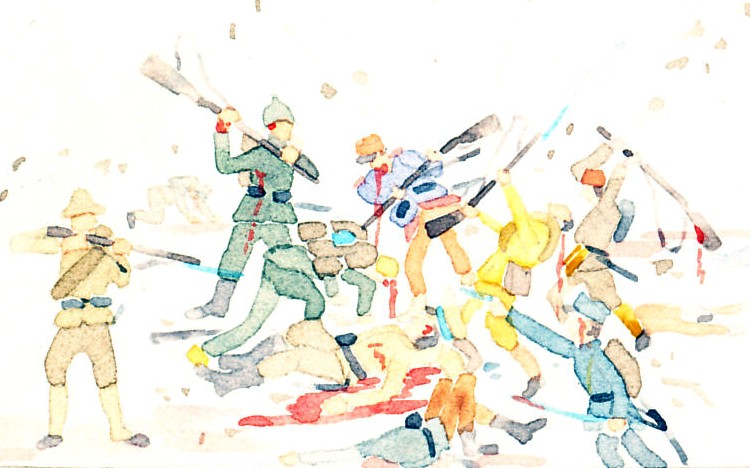The Western Front, 1914 and 15. The Imperial German eagle is a crow feeding on carrion, perched on a cross bearing scenes of the destruction of its advance and retreat through France and Belgium: the shelled and burned cathedral of Reims, the ruination of the city of Arras, a destroyed town, deaths both military and civilian in Belgium. France held its territory along the border with Germany, and turned back the German advance in the Battle of the Marne, but Belgium and northern France remained occupied through the war.
Accused of war crimes, Germany, labeled on the map by "Kulturland?", defended itself by speaking of its superior culture.
Spain, Holland, and Switzerland remained neutral during the war, and are show in green. Italy joined the Allies in May, 1915, possibly shortly before the card was printed, which may explain the use of red for its name and border.

[On the cross:] Reims, Après le Passage des Allemands, Arras!, Belgique
[On the map, the countries of] Angleterre, Hollande, Espagne, Suisse, Italie, Belgique, France, Kulturland? [Germany, and the cities of] Douvres, Calais, Paris, Arras, Reims, Maubeuge, Verdun, Nancy, Epinal, and Belfort
Other views:
Front
